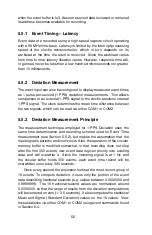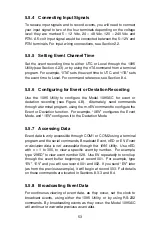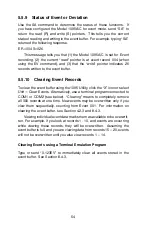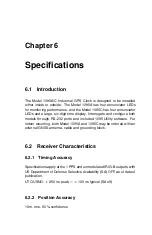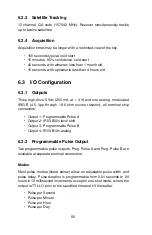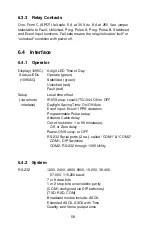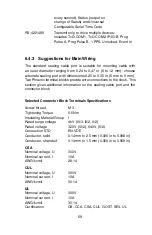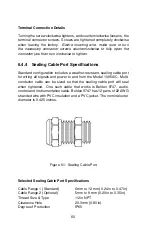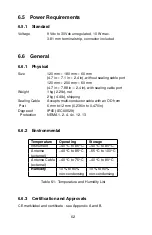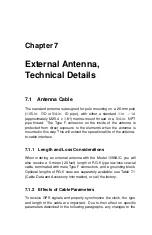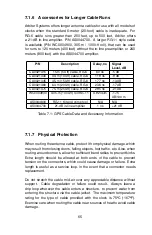
So, you can see that most of the drive voltage is lost with 100 mA
of current and 500 feet of 22 AWG twisted pair transmission line; this
includes the voltage losses at the source resistor. 0.58 Vpp may very
likely not be detected by the decoder in some IED’s.
Remember to (1)
make your cable runs as short as possible, (2) use a larger wire size,
and (3) carefully distribute the loads
.
5.4.7
Voltage Matching for Modulated IRIG-B
With modulated IRIG-B, it was mentioned that certain decoders are very
intolerant of drive voltage variation. If the IED specification says that
the acceptable voltage range is 3.3 Vpp
±
0.5 volt, and the available
voltage is high, then you must reduce the voltage using a dropping
resistor (
R
drop
). The value of the dropping resistor is determined by
dividing the difference voltage (
V
dif f
) by the device current (
I
dev
).
For example, suppose that the available voltage is 4.5 Vpp (
V
oc
), the
(nominal) acceptable voltage is 3.3 Vpp, and the device current is 10
mA. Determine the dropping resistor value.
First, you must determine the modulated output voltage at 10 mA of
drive current. Next, you can calculate the value for the dropping resistor
(
R
drop
) as seen in Calculations 5.4 and 5.5.
(5.4)
V
out
=
V
oc
−
R
source
×
I
dev
= (4
.
5
−
0
.
196) = 4
.
304
V olts
(5.5)
R
drop
=
V
dif f
÷
I
dev
= (4
.
304
−
3
.
3)
÷
0
.
01 = 100
.
4
Ohms
The Power dissipation (P) is found from Calculation 5.6:
(5.6)
P
=
I
2
R
= 0
.
01
2
×
100
.
4 = 0
.
01
W atts
In this example, an eighth-watt resistor should work fine.
For a voltage that is too low, the modulated IRIG-B signal level must
be increased by some other means, such as (1) distributing the loads
differently to reduce the current (raising the available voltage), (2) by
reducing the cable loss by increasing the wire size, or (3) by distributing
the loads differently.
5.4.8
Cable Delays
Compensate for antenna cable delays in the 1095A/C by using the 1095
Utility, or by using the “AD" command described in Section 8.11.1. To
50

















